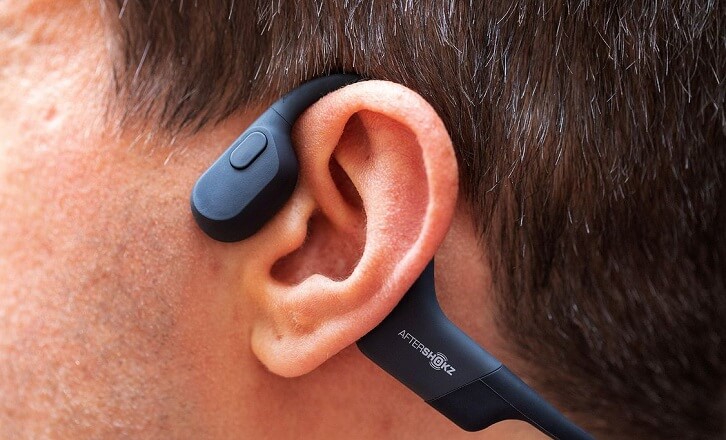How to Charge AirPods Without a Case
Discover the truth about how to charge AirPods without a case. Uncover myths, find alternatives, and safeguard your audio experience.
The concept of Bone Conduction has been around quite long. One of the early users of this concept was Ludwig van Beethoven who found out he could hear the sound by holding a rod in his teeth and attaching the rod to his piano. You might also know of Bone anchored hearing aids (BAHA) which are surgically implanted hearing aids designed to help people with hearing difficulty.
Bone conduction headphones, unlike other headphones, sit on the outside of the ear. This means you can listen to music, or take phone calls without blocking your ears. Bone conduction headphones also help deaf people hear sounds.
So, how do bone conduction headphones work? In this article, I’ll explain how bone conduction headphone works, why and who should use them, and lastly the advantages and disadvantages associated with bone conduction technology.
Enjoy.
To properly understand the above, let’s see how sound is transmitted normally using headphones.
When the sound is generated by the headphone driver, it passes via different ear structures before being received and translated by the brain. First, it enters through the pinna which directs the sound further into the auditory canal and then to the eardrum. The eardrum is a thin membrane that vibrates as sound waves hit it. As the eardrum vibrates, it transmits the vibrations to the other side where three small bones are attached to it called ossicles or auditory ossicles.
The ossicles work by transmitting the sound waves in the air to the fluid-filled cochlea. In the cochlea, which is a structure resembling a snail shell, the sound vibrations cause tiny hairs to vibrate and generate nerve impulses. The impulses then travel to the brain for translation.
With bone conduction headphones, the drivers in headphones decode the sound waves of whatever you are listening to and convert them to vibrations. The vibrations are then transmitted via the bones in your head. This bypasses the eardrum and the sound is directly received by the Cochlea.
Bone conduction headphones are great for people who want to keep their ears open while still enjoying music. This might apply while exercising, listening to traffic, or communicating with other people.
For people with hearing disabilities, you can use bone conduction to get around some of these issues. This technology might be useful especially with conductive hearing loss. There are even some hearing aids like Bone anchored hearing aids (BAHA) that take advantage of bone conduction.
Bone conduction headphones are not like regular headphones. They rest against the cheekbone or upper jaw where audio vibrations are passed to the cochlea. This leaves the auditory canal open to other sounds around us. For people who exercise on busy streets, bone conduction headphones are great at offering increased situational awareness. You will be able to enjoy your favorite workout music while still being able to move safely.
In-ear, on-ear, or over-headphones all have their shortcomings related to comfort. If you are a regular headphone user, then you might have at some point experienced comfort-related problems unless you are using Custom in-ear monitors (CIEMS). The design of bone conduction headphones eliminates comfort issues by a very large margin. All you need to do is position them properly and you are set to go.

Aftershokz Aeropex Bone Conduction Headphones
Apart from good comfort, the design also keeps the bone conduction headphone from falling out like regular earbuds. So whether you are working out or moving around, you do not have to worry about the headphone’s fit.
By only using vibrations and not introducing any sound, the advantage is evident with this type of headphone. Using regular headphones could damage the eardrum when excess power is used. With bone conduction headphones, you do not have to worry about ear damage.
One of the major drawbacks of bone conduction headphones is sound quality. While they do not sound bad, compared to regular headphones they are not great. However, as technology evolves it might offer better audio quality. If sound quality is a priority for you, then bone conduction headphones might be a bad bet for you.
If you are looking for a good bone conduction headphone, the biggest brand you can check out is AfterShokz. The company has several different models you can check out. some of the notable models include the Aftershokz AEROPEX, Aftershokz XTRAINERZ, Aftershokz AIR, and Aftershokz TITANIUM.